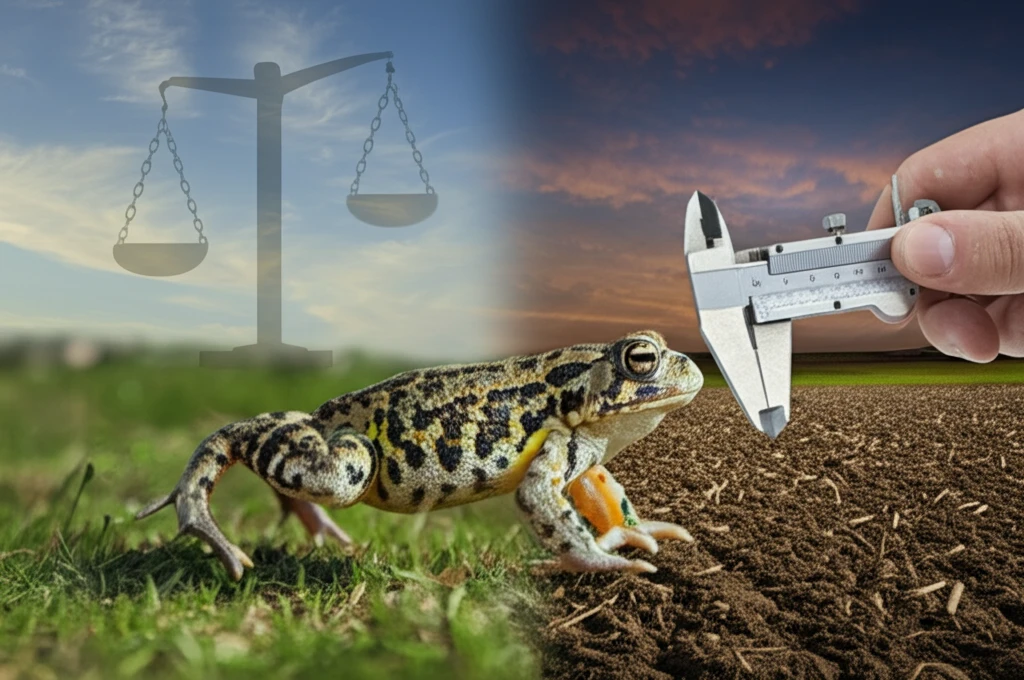
Does Toe Clipping Hurt Toads? Unveiling the Truth About Amphibian Research
"A new study reveals the surprising effects of toe clipping on toads' short-term locomotor performance. Learn if this common research practice impacts their ability to escape predators or find mates."
For decades, scientists have relied on toe clipping as a seemingly harmless way to mark and track amphibians in the wild. This involves removing one or more toes to identify individual animals for mark-recapture studies, genetic analysis, and monitoring the effects of environmental contaminants. However, ethical questions linger: Does this common practice inflict pain or compromise an animal's well-being?
The debate over toe clipping centers on its potential impact on an amphibian's ability to survive and thrive. Concerns include pain, increased risk of infection, and impaired movement. Some studies suggest toe clipping reduces return rates in mark-recapture studies, potentially skewing population estimates. Others highlight ethical issues, questioning whether the benefits of research outweigh the potential harm to individual animals.
To shed light on this controversy, a recent study published in Annales Zoologici Fennici investigated the effects of toe clipping on the short-term locomotor performance of natterjack toads (Epidalea calamita). By measuring sprint speed and run rate before and after toe clipping, researchers aimed to determine whether this marking technique hinders a toad's ability to escape predators, forage for food, or find mates.
The Great Toad Experiment: Does Losing a Toe Slow You Down?

Researchers in Spain conducted the toad study on both agricultural and natural land, seeking to understand the subtle impacts of toe-clipping. They first recorded the movement speed of the toads in a straight path before splitting them into two groups. The scientists videotaped natterjack toads running along a linear runway, carefully measuring their sprint speed and run rate (the number of runs per meter).
- Sprint Speed: The toad's fastest burst of speed over a short distance.
- Run Rate: How often the toad stopped and started while traveling a meter.
- Habitat: Whether the toad was found in agricultural or natural land.
Implications for Research and Conservation
This study offers valuable insights for researchers and conservationists grappling with the ethical considerations of animal marking techniques. While toe clipping may not have immediate effects on toad locomotion, the authors emphasize the importance of considering long-term impacts and potential effects on other species. Further research is needed to fully understand the consequences of toe clipping on amphibian behavior, survival, and reproductive success. By carefully weighing the benefits and risks, scientists can strive to minimize harm to individual animals while advancing our knowledge of the natural world.
